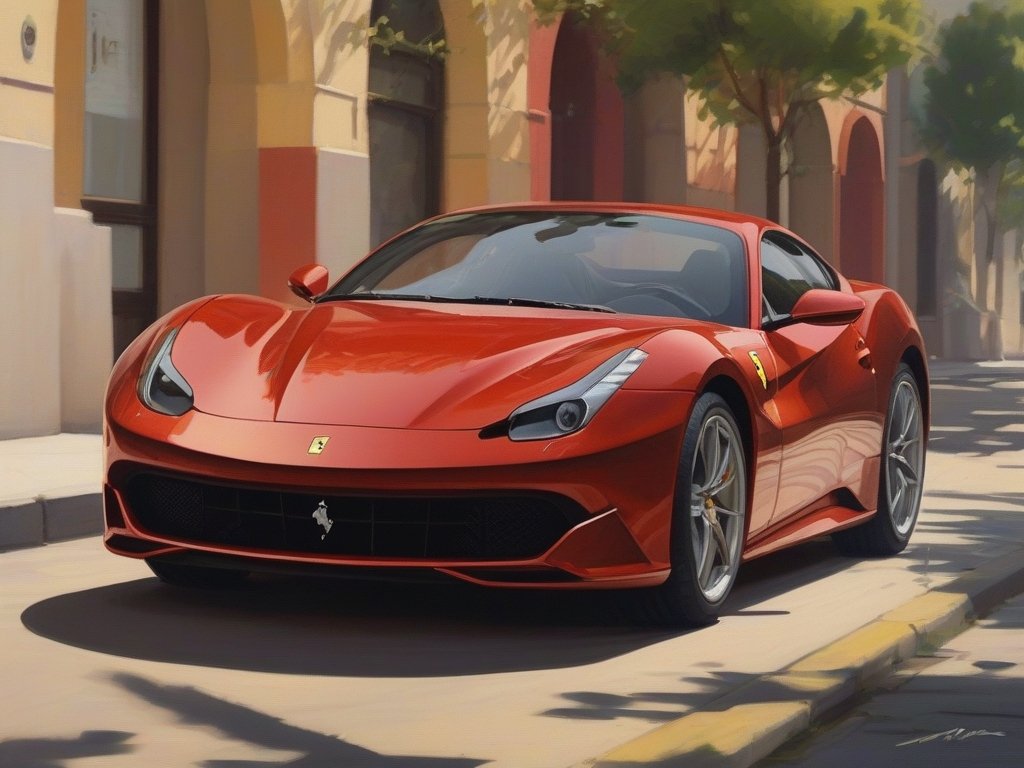Many people wonder who contributed more to our electric world, Tesla or Edison. Thomas Edison invented the light bulb, but Nikola Tesla dreamed up the alternating current system we use today.
This article will dive into their historic rivalry and compare their lasting impacts on technology and society. Discover which inventor’s genius powers your life!
Key Takeaways
- Edison, known for inventing the light bulb and promoting direct current (DC), focused on practical applications and entrepreneurial endeavors.
- Tesla, famous for his invention of alternating current (AC) system and numerous groundbreaking technologies like the Tesla coil and wireless communication, pursued a more theoretical and visionary approach to innovation.
- Their historic rivalry over AC versus DC power systems sparked controversy, leading to debates about their contributions in shaping modern electricity distribution. This contributed to public perceptions that shaped their cultural legacies.
- The contrasting ideologies, methodologies, and business strategies of Edison and Tesla have left behind a lasting legacy in science and technology, sparking ongoing discussions about who truly deserves credit for shaping the modern electrical landscape.
The Birth of the Rivalry

Thomas Edison and Nikola Tesla, two prominent figures in the history of electrical engineering, began their careers with vastly different backgrounds and approaches to innovation.
Early life and career of Thomas Edison
Thomas Alva Edison was born in 1847 in Ohio. As a kid, he loved to learn but often got into trouble at school. So, his mom taught him at home instead. He read lots of books and began experimenting early on.
At age 12, Edison started selling newspapers on trains. He also sold candy and vegetables to make extra money.
Edison grew curious about how things worked and spent much of his time doing experiments. By the time he turned 22, he had already created his first invention: an electric vote recorder for lawmakers.
But it wasn’t successful because it was too fast for the voting process back then. This setback didn’t stop him though; Edison kept inventing new things and soon set up his own lab in Menlo Park, New Jersey where many more inventions would come to life.
Early life and career of Nikola Tesla
Nikola Tesla was born in 1856 in a small town that’s now part of Croatia. His dad was a priest and his mom made home tools. He liked to study science and engineering. At school, he did really well, especially in physics and math.
Tesla worked at a phone company in Budapest in 1881. After that, he moved to Paris to work for the Continental Edison Company. There he learned lots about electric power and motors.
In 1884, Tesla went to New York with little money but full of ideas. He soon got the chance to meet Thomas Edison and started working for him before they had big disagreements over AC (alternating current) and DC (direct current).
Later on, Tesla would create his own company called the Tesla Electric Light & Manufacturing where he designed things like the AC motor which changed how electricity gets around today.
The War of the Currents

Edison promoted direct current while Tesla invented alternating current, leading to a rivalry that impacted electricity distribution.
Edison’s promotion of direct current
Thomas Edison stood strong behind direct current, or DC power. He said it was the safest way to bring electricity into homes and businesses. His DC system sent electric energy straight to where it was needed.
But there was a problem. It couldn’t go very far without losing strength.
To show how safe his direct current was, Edison put on public displays. He even used it in an electric chair for the first time to prove its power could be controlled. Still, he wanted everyone to use his DC system because that would mean big business for his company, Edison Electric Light Company.
Tesla’s invention of alternating current
After Edison’s promotion of direct current, Tesla made a significant impact with his invention of alternating current (AC) power system. Unlike direct current, AC could be transmitted over long distances more efficiently, making it ideal for widespread adoption.
His development and promotion of AC power led to the “War of the Currents” and revolutionized electricity transmission, ultimately setting the stage for the modern age of electrical energy.
Tesla presented his AC motor at the Chicago World’s Fair in 1893, showcasing its ability to transmit electricity over great distances. This innovation played a crucial role in the widespread adoption of AC power systems and its use in transforming electrical power into an efficient form for various applications.
Collaboration between Edison and Tesla
Edison and Tesla had a significant but tumultuous collaboration. Despite their differences, they joined forces to work on improving electrical power system designs. This partnership resulted in the development of generators and motors that utilized alternating current (AC).
However, due to conflicting ideologies and personal disputes, their collaboration eventually faltered, leading them to part ways.
Their collaborative efforts laid the groundwork for modern electricity distribution systems and paved the way for the widespread use of AC power. Their joint work at that time greatly influenced advancements in electrical engineering and set the stage for much of our contemporary technology.
The impact of the War of the Currents on electricity distribution
As a result of the War of the Currents between Edison’s direct current and Tesla’s alternating current, electricity distribution was revolutionized. The widespread adoption of Tesla’s AC system enabled electricity to be transmitted over longer distances more efficiently.
This advancement laid the foundation for modern power grids and facilitated the widespread electrification of cities, leading to substantial improvements in people’s daily lives.
The rivalry between Tesla and Edison significantly shaped the development of electricity distribution infrastructure, ultimately impacting how we harness and utilize electrical power today.
Notable Work and Contributions
Edison’s inventions included the phonograph and motion pictures, while Tesla’s inventions featured the Tesla coil and alternating current motor. To learn more about their influential contributions to science and technology, keep reading!
Edison’s inventions
Thomas Edison’s inventive mind led to significant contributions in various fields. Here are some of his notable inventions:
- Invention of the phonograph, a device that could record and reproduce sound.
- Development of the first practical electric light bulb, revolutionizing indoor lighting.
- Creation of the motion picture camera, which laid the foundation for modern filmmaking.
- Innovation of the alkaline storage battery, improving energy storage technology.
- Introduction of the carbon transmitter, enhancing telephone communication capabilities.
Tesla’s inventions
After establishing his reputation as a brilliant inventor and engineer, Nikola Tesla went on to develop numerous groundbreaking inventions and technologies. His notable contributions include:
- Alternating Current (AC) System: Tesla’s development of the AC system revolutionized electricity distribution, making it more efficient and practical for long-distance power transmission.
- Tesla Coil: This invention is crucial in generating high-voltage, low-current, high-frequency alternating-current electricity.
- Induction Motor: Tesla’s invention of the induction motor laid the foundation for modern electrical power systems and industrial applications.
- Wireless Communication: Tesla’s work in wireless communication and radio technology significantly influenced the development of modern telecommunications.
- Remote Control: One of Tesla’s lesser-known inventions is the remote control, which has become an integral part of various electronic devices today.
- Tesla Turbine: An innovative bladeless turbine design with potential applications in various industries including power generation and propulsion systems.
- Wardenclyffe Tower: Although not completed, this project aimed to provide wireless communication and transmit electrical power without wires over long distances.
- Earthquake Machine: While controversial, Tesla claimed to have developed a mechanical oscillator that could produce powerful vibrations capable of causing earthquakes.
Comparison of their ideologies and approaches
The contrasting ideologies and methodologies of Thomas Edison and Nikola Tesla illuminated their rivalry as they shaped the future of electricity. Below is a concise comparison in table form.
| Aspect | Thomas Edison | Nikola Tesla |
|---|---|---|
| Approach to Innovation | Practical, market-oriented, focused on direct applications. | Theoretical, visionary, explored possibilities beyond immediate commercial value. |
| Business Strategy | Entrepreneurial, established numerous companies, monetized inventions. | Less focused on commercial aspects, often struggled financially as a result. |
| Public Relations | Adept at self-promotion, engaged the media to enhance his public image. | More reclusive, less interested in fame or personal brand. |
| Patents and Ownership | Aggressively protected his patents, involved in numerous legal battles. | Had patents, but less litigious; some of his work went unpatented or was patented by others. |
| Scientific Method | Empirical, relied on trial and error, “invention factory” methodology. | Conceptual, used mathematical analysis and theoretical frameworks as a base. |
| View on AC/DC | Advocate of direct current (DC), invested heavily in its development and infrastructure. | Proponent of alternating current (AC), invented the AC motor and transformer. |
Such distinct perspectives also steered their respective legacies, paving divergent paths in the annals of scientific history. Moving on to the next section, let’s delve into the lasting legacy and cultural impact these two titans have left behind.
Legacy and Cultural Impact
Edison and Tesla’s rivalry has left a lasting legacy on science and technology, sparking controversies, debates, and inspiring numerous pop culture references.
Controversies and debates surrounding Edison and Tesla
Many controversies and debates surround Edison and Tesla, often fueled by their differing approaches to electrical innovation. One major point of contention is the War of the Currents, where Edison fiercely promoted direct current (DC) while Tesla championed alternating current (AC).
This clash not only impacted electricity distribution but also led to a debate over which system was safer and more efficient for transmitting electricity. Additionally, there are disputes about the extent of each inventor’s contributions and whether Edison’s efforts to discredit Tesla affected historical narratives.
These controversies continue to spark discussions on who truly deserves credit for shaping the modern electrical landscape.
Furthermore, cultural influences have added fuel to these debates, with both inventors portrayed differently in media and popular culture. While some view Edison as an American hero embodying the spirit of innovation, others depict him as someone who exploited his employees’ ideas.
Contributions to science and technology
Thomas Edison’s contributions to science and technology are evident in his invention of the phonograph, the motion picture camera, and the long-lasting practical electric light bulb.
His work laid the foundation for modern sound recording and cinema while revolutionizing indoor lighting. In contrast, Nikola Tesla’s scientific contributions include innovations in electrical engineering such as the development of alternating current (AC) electrical systems, which became instrumental in powering numerous devices from motors to appliances.
Additionally, Tesla’s ideas about wireless communication and renewable energy were ahead of his time, influencing future technological advancements.
Their differing approaches led to significant milestones in electricity generation and distribution with Edison promoting direct current (DC) while Tesla championed AC. This rivalry between them further propelled advancements in electricity distribution impacting generations to come.
Pop culture references and influence
Tesla and Edison’s rivalry has transcended the realm of science and technology, permeating popular culture in various forms. The contrasting personas of the two inventors have frequently been depicted in literature, movies, and television shows, often portraying Tesla as a misunderstood genius overshadowed by Edison’s fame.
Their contributions to electricity and innovation have inspired countless plotlines and characters in fiction, reflecting the ongoing fascination with their historical feud. Furthermore, both inventors continue to be celebrated in modern pop culture through references in music, art, fashion, and even video games – solidifying their status as enduring icons whose impact extends far beyond the realms of science.
Conclusion
In conclusion, the rivalry between Tesla and Edison shaped the course of electrical innovation. Their differing approaches to current technology continue to influence modern electricity distribution.
Both inventors left a lasting impact on science and technology, sparking ongoing debates about their legacies. Ultimately, their contributions have permeated pop culture and inspired generations of innovators in the field of electrical engineering.
FAQs
1. Who were Tesla and Edison?
Tesla and Edison were two famous inventors in the nineteenth century. Nikola Tesla worked on alternating current (AC), and Thomas Edison focused on direct current (DC).
2. What was the rivalry between Tesla versus Edison about?
The rivalry was about which type of electric current was better for sending electricity to people’s homes, Tesla’s AC or Edison’s DC.
3. Did Tesla ever work for Edison?
Yes, when Tesla quit working at his own electric company, he briefly worked at the Edison Machine Works before leaving to partner with George Westinghouse.
4. What kind of inventions did they create?
Edison developed the light bulb and started Pearl Street Station, an electricity generator in Lower Manhattan; while Tesla invented transformers related to AC power and worked on a big project at Niagara Falls.
5. Which inventor became more successful in their time?
Both had success, but General Electric picked up with Edison’s inventions after he died. Meanwhile, Westinghouse used Tesla’s ideas successfully for long-distance electricity generated using AC.









Leave a Reply